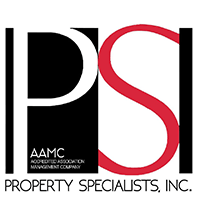How many of you have been to the meeting immediately following an election, ready to choose officer positions and you get to secretary and not a single Board Member volunteers? Property Managers, Board Members, and Homeowners have all witnessed this I’m sure. That is because one of the daunting tasks of the secretary is to take the meeting minutes. Taking meeting minutes frightens Board Members so much that many Boards will outsource this duty rather than do it themselves. The funny part is that there really isn’t anything to be afraid of. Taking minutes is easy!
Most Boards are under the common misconception that the job of taking minutes at a board meeting is similar to that of a court recorder; every word must be put down on paper. This notion is far from the truth. As any good attorney will tell you, your minutes are NOT verbatim transcripts. Meeting minutes should have the following criteria: date of the meeting, time the meeting was called to order, location of the meeting, names of the Board Member present and absent, whether a quorum was met, voting where a motion was made, seconded and the outcome of the vote, actions taken or agreed to be taken, items that are tabled and time of adjournment.
In order to take the best minutes while still being an active participant in the meeting, be prepared for the meeting. Have a template to follow so that jotting down notes to be transcribed into minutes after the meeting is seamless and will only take moments to complete. Read through the agenda ahead of time, have a list of the current board members and property manager listed on your notes so that when roll call is taken all you have to do is place a check mark next to the name of the member present. These simple tasks can take an overwhelming duty and turn it into a cake walk.
When it comes time to write up the meeting minutes, keep it short, sweet and to the point. The following sentence checks off three items on our list of criteria and should start off your meeting minutes for every meeting, “The January 30, 2017 Regular Meeting of the Board of Directors of Sunshine Condominium Association was called to order with a roll call of the Board at 6:00 pm at Chicago Public Library, 1234 S. Street, Chicago, IL.” By keeping this sentence straight to the point, it can easily be used as a template for your future meeting minutes where only some of the information will change meeting to meeting.
The most important of the criteria is to record the motions and voting where a motion was made, seconded and the outcome of the vote. Again, keeping this to the point, a sentence such as “Upon motion duly made, seconded and unanimously carried, the November 7, 2016 meeting minutes were approved” will do the job. There is no need to record who made the motion and seconded it. When recording motions made for proposals and contracts, the contractor’s full name, amount of the job or contract and the term of the contract are important and should be included as well. “Upon motion duly made, seconded and unanimously carried, the Board approved the proposal from Contractor A to replace the generator control panel in the amount of $1,234.56.” It is also important to note agenda items that are tabled. The same sentence can be used in this scenario as well, “Upon motion duly made, seconded and unanimously carried, the Board voted to table the proposal from Contractor A to replace the generator control panel, requesting Management receive a second bid.”
The format above does not include the discussion had regarding the proposal prior to the motion made. The discussion itself is not necessary for the meeting minutes. However, not all votes are unanimous nor do they need to be. A simple majority of the Board is all it takes, in most cases, to pass a vote. “Upon motion duly made and seconded, the Board approved Contractor B to clean the entry monument in the amount of $345.00 in a 4 to 1 majority, with Director Smith dissenting.” If the dissenting Director would like a brief explanation, this may be included, “…with Director Smith dissenting due to a lack of follow up from Contractor B on previous jobs.”
This leads us to adjournment. A brief statement of when the Board convened into executive session, if needed, should be included, “The Board recessed into Executive Session to discuss delinquencies at 6:30 pm and subsequently reconvened into open session at 6:35 pm.” If there are no decisions to be made out of executive session, this statement could immediately be followed by a record of adjournment, “There being no further business to come before the Board, upon motion duly made, seconded and unanimously carried, the meeting was adjourned at 6:37 pm.” However, while Board’s are allowed to discuss certain items in executive session, all decisions must be made during an open meeting. If you are unsure on what can or cannot be discussed in executive session, please consult your Association’s attorney. Motions after executive session will be recorded just as noted above. However, there are sensitive matters that are generally discussed in executive session and Boards like to respect an owner’s privacy who may be seeking a hardship due to medical reasons. Vague motions can be worded for these situations but it is again best to seek the opinion of the Association’s attorney on how to record those matters.
Remember, taking minutes for a board meeting is not as scary as it sounds. Simple tasks such as preparing for the meeting by going over the agenda, having a list of the board members and following a template can make this daunting task manageable. Only key criteria is necessary in recording minutes of a board meeting and that criteria should be short, sweet and to straight to the point. By following these simple tasks any board secretary can be the hero and save their Association money by not outsourcing their minutes.




 CAI - Illinois Chapter
CAI - Illinois Chapter 



